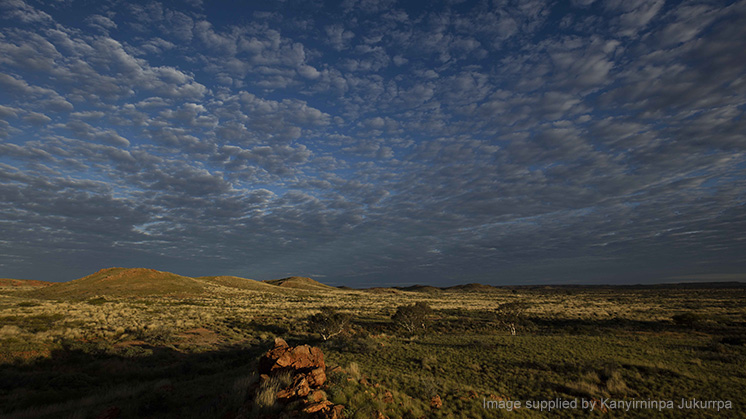
Peter Johnson is one of the founders and a Director of Kanyirninpa Jukurrpa (KJ) a Martu organisation set up in 2005 to look after culture and country, build a viable economy in the communities and carve a stronger future for Martu youth.
When the COVID-19 crisis hit, the Martu communities took on an unexpected and crucial role. “We did a census in Newman,” says Peter. “The Martu population there went from about 370 people to about 190 people and of that 190 only about 40 are children. Working with Martu, we got old people and children as well as whole families out of the towns and back into communities.”
Community members, Indigenous organisations and government implemented lockdown strategies significantly more intense than those in non-Indigenous Australia. “They had to,” says Peter, “Governments realised they need remote communities because if COVID-19 gets into an Indigenous population in the desert it's going to be horrific. A majority of the adults have a range of serious underlying medical conditions so, suddenly, remote communities become a huge part of the protective fabric for a vulnerable sector of the Australian population.”
Communities and a cost benefit analysis
Peter says the rapid and successful response to the COVID-19 crisis saw local and state government agencies, NGOs and the mining giant, BHP, working harmoniously with the communities to keep people safe and healthy.
His larger point is about deeper perceptions of the communities.
“The conversation about remote communities for the past 20 years has been dominated by perspective that they are not viable, they’re an expensive impost on the public purse.”
Peter and the KJ organisation know that’s not true. Working with Social Ventures Australia they received funding to do a cost benefit analysis focused on the costs borne by the Western Australian government. The study suggested that a ten-year, $27 million investment in housing and program support in just one community would generate a net saving to the WA Government of $54 million – double their investment.
Peter says, “The idea that there’s a vast amount of money to be saved if everyone moved to town is naïve; it’s not supported by the evidence. There are financial benefits in supporting vibrant communities – but you reduce major social costs as well. The problems of alcohol-related disease, alcohol-related violence, incarceration, child neglect, are all worse in towns. COVID-19 proved that. Juvenile crime, ambulance call outs, police job numbers – all went off a cliff in Newman. The entire conversation needs to be turned 180 degrees – remote communities are the answer not just financially but socially.”
What works in communities?
In the Martu lands, which stretch across nearly 14 million hectares of the Western Desert, KJ runs cultural programs that include return to country trips, and the mapping of traditional country and language. Their social programs include work on early childhood development that covers early education but is also designed to help Martu parents manage the complexities of engaging with the Western world. KJ runs leadership programs and initiatives to reduce alcohol abuse and violence. There is also a ranger program which engages in cultural and environmental work employing over 350 Martu.
It all costs money. Governments provide around 50% of that funding and BHP around 40%. Philanthropy provides about six percent of the money KJ needs to do its work. Peter Johnson says there is room for that contribution to expand.
“During COVID-19, government and BHP were very generous and ready to provide crucial resources,” says Peter Johnson. “Perpetual reached out to us during this time and assisted KJ in providing support to Martu which was greatly appreciated. We recognise the invaluable role of philanthropic organisations as the time and the place where philanthropy makes most difference is over the long-term and in very different ways.”
Peter gives the example of a leadership program they’d developed that they couldn’t get government funding for. “It's an absolute foundational program that builds capability, aspiration and confidence and it's a catalyst for a whole array of other social programmes. But government struggles to fund it because it doesn't have immediate outcomes.”
Philanthropy can play its role by building capacity and being much more open to different ideas of success,” Peter says.
“In a remote community, something that makes intuitive sense to whitefellas almost certainly won't work. You need programs that make sense to Indigenous societies. You have to back culturally congruent, innovative approaches because you are dealing with a different society, different societies. Government is not good at funding innovation or seeding new initiatives – and that’s where philanthropists can step up.”
To find out more about the Martu people and their lands, KJ website
Perpetual acts as trustee for the Martu Future Fund.
